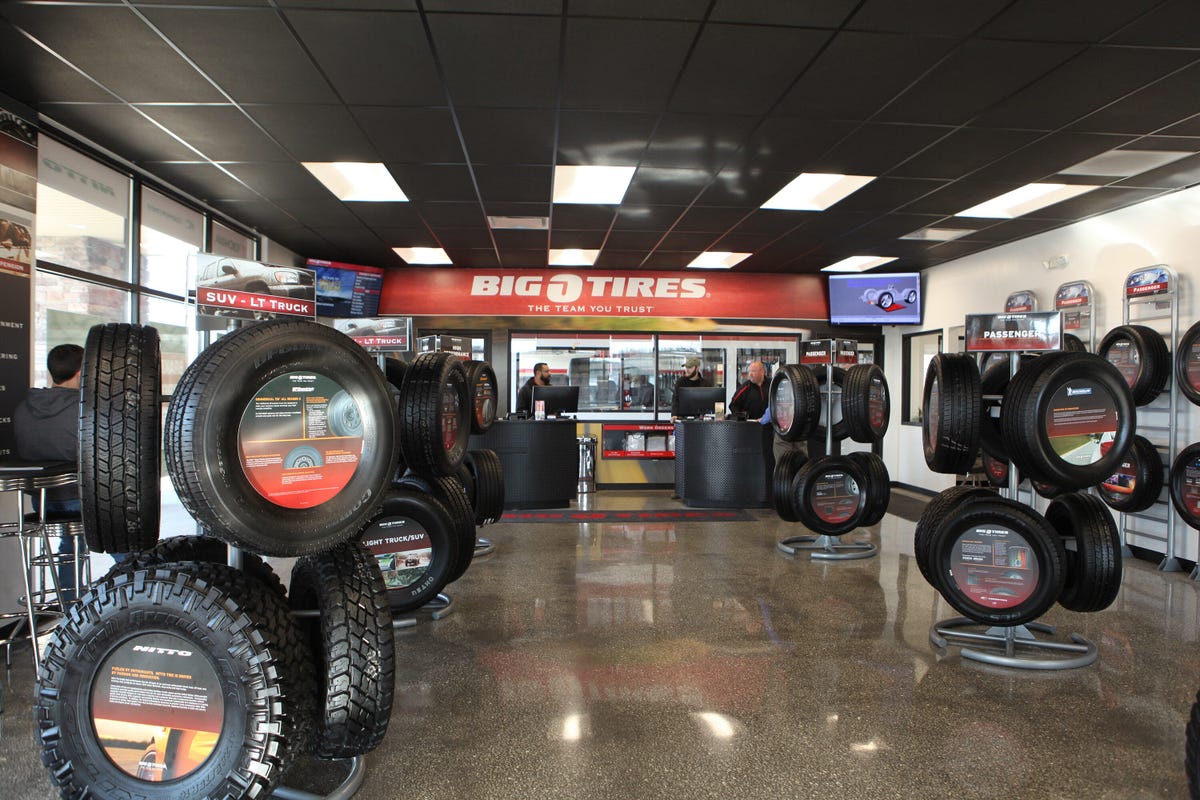Tire Solution: Recognizing Tire Pressure Monitoring Solutions
Understanding Tire Pressure Monitoring Systems (TPMS) is a critical element of keeping ideal lorry efficiency and safety on the road. With advancements in automobile modern technology, TPMS has actually ended up being a basic function in modern automobiles, supplying real-time details on tire stress degrees. Digging deeper right into the details of TPMS, one can discover the various parts that make up this system and the significance of each in making sure precise surveillance. From straight to indirect TPMS systems, the landscape of tire stress surveillance is diverse, each with its one-of-a-kind set of advantages and considerations. Stay tuned to unravel the intricacies of TPMS, from upkeep suggestions to the undeniable benefits of maintaining your tires appropriately inflated. tire shop morris.

Value of TPMS
The relevance of Tire Pressure Monitoring Equipments (TPMS) depends on their capability to enhance lorry safety and security and performance through real-time monitoring of tire stress levels. Maintaining the proper tire pressure is essential for ensuring optimum handling, stopping, and overall safety and security of an automobile. TPMS offers vehicle drivers with instant feedback on any overinflated or underinflated tires, enabling for prompt modifications to be made.
Components of TPMS
Comprising different crucial elements, a Tire Pressure Tracking System (TPMS) works as an innovative safety function in modern-day cars. The major parts of a TPMS include sensors, a control component, and a warning sign. Sensors are normally situated in the tire valve stem or connected to the wheel setting up, where they determine tire pressure and transfer information to the control module. If it discovers substantially reduced pressure in any of the tires, the control module processes this info and sets off a warning. The caution indication, often a symbol on the control panel, signals the vehicle driver to examine the damaged tire or tires. Some progressed TPMS versions additionally present the real tire pressure readings for each and every tire, giving vehicle drivers with real-time details to make sure ideal tire performance and safety and security. By monitoring tire stress constantly, TPMS assists prevent crashes, minimizes tire wear, and enhances fuel performance, making it a vital element for vehicle safety and security and efficiency.
Kinds of TPMS

On the other hand, indirect TPMS relies on the car's wheel speed sensors to check tire stress. This system detects underinflation by comparing the rotational speeds of the wheels. Indirect TPMS is much less pricey than straight TPMS, as it makes use of existing sensing units within the lorry.
While straight TPMS offers more accurate readings, indirect TPMS is simpler in design and usually needs less maintenance. Both systems have their limitations and advantages, and the selection in between them often relies on variables such as price, automobile make, and individual choice. Recognizing the distinctions between these two types of TPMS can assist automobile proprietors make notified choices relating to tire maintenance and security.
TPMS Upkeep Tips
Efficient maintenance of TPMS is vital for ensuring ideal performance and safety of your car. Frequently checking the TPMS sensors for any damage or deterioration is vital. Ensure that the sensing units are cost-free and tidy from debris that can disrupt their performance. Additionally, it is recommended to check the sensing unit batteries periodically and change them as needed to assure precise analyses. Conduct routine examine the tire pressure degrees and compare them with the TPMS analyses to ensure they correspond. If there are any type of disparities, alter the system following the maker's standards. In addition, throughout tire rotation or replacement, make certain that the TPMS components are taken care of very carefully to prevent any type of potential damages. If the TPMS warning light brightens on the control panel, deal with the problem quickly by examining the tire pressures and the overall system for any type of mistakes. By adhering to these maintenance suggestions, you can lengthen the life-span of your TPMS and enhance the security of your driving experience.
Benefits of Proper Tire Pressure
Maintaining appropriate tire stress, as emphasized in TPMS Maintenance Tips, is crucial for enjoying the countless benefits associated with ideal tire pressure levels. Furthermore, correct tire pressure guarantees also tire wear, expanding the lifespan of the tires and promoting much safer driving problems. In verdict, the benefits of proper tire stress go past simply tire longevity; they encompass enhanced gas effectiveness, enhanced security, much better lorry efficiency, and overall driving comfort.
Conclusion
In final thought, discount tires morris il comprehending tire pressure monitoring systems (TPMS) is vital for keeping optimum tire stress and ensuring vehicle safety. By acknowledging the significance of TPMS, knowing with its elements, understanding the different types offered, adhering to proper maintenance suggestions, and realizing the benefits of preserving appropriate tire pressure, chauffeurs can enhance their driving experience and prolong the life expectancy of their tires. Proper tire pressure is key to efficient and safe car operation.
